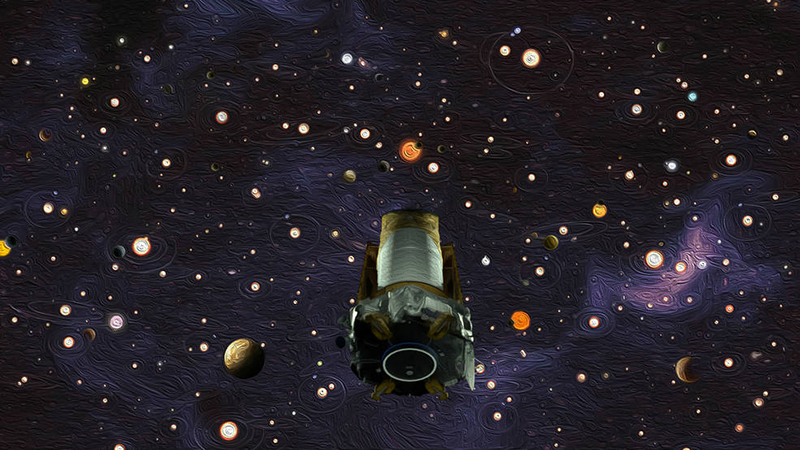The Kepler space telescope—the most prolific discoverer of exoplanets, or worlds outside our solar system, to date—has run out of fuel and ceased science operations, NASA announced on October 30, 2018. Kepler leaves a legacy for first revealing that exoplanets are ubiquitous, actually outnumbering stars. Within the Milky Way Galaxy alone, home to some 300 billion stars, Kepler's findings have statistically suggested that there are on the order of a trillion planets. See also: Exoplanet; Galaxy; Kepler mission; Milky Way Galaxy; Planet; Solar system; Star; Telescope; Universe

During the spacecraft's nine-plus years of observations, it observed a total of more than 530,000 stars. Kepler monitored thousands of stars simultaneously for transits—events during which exoplanets cross their stars' faces as seen from our solar system, causing tiny brightness dips. Recording multiple transits allows astronomers to calculate a world's orbital path, with the degree of stellar dimming tied to a planet's size. Follow-up observations by other telescopes to double-check Kepler's detections have since led to the confirmation of more than 2600 exoplanets—the lion's share of the approximately 3800 alien planets documented so far. More confirmatory work lies ahead, as the Kepler mission yielded a further 4700 or so exoplanet candidates awaiting validation. See also: Light; Light curves; Orbital motion; Transit (astronomy)
Kepler has challenged the notion that our solar system is typical. The most common type of planet in Kepler's haul is actually not found in our solar system—worlds with a mass between that of Earth and gassy worlds like Uranus and Neptune. Many mysteries remain regarding the properties of these planets, dubbed super-Earths and mini-Neptunes. In addition, Kepler observed many solar systems with tighter configurations than ours, with planets piled up in close orbits to their stars and each other. These unexpected architectures are putting conventional models of solar system formation to the test. See also: Earth; Gas; Neptune; Uranus
The Kepler mission has also addressed the profound scientific and philosophical question of whether life exists elsewhere in the universe. The telescope's data indicates that one-fifth to as many as one-half of the stars visible in the night sky host planets with sizes and compositions similar to those of Earth, while also residing in the temperate orbital band known as the habitable zone. These not-too-hot, not-too-cold worlds could sustain liquid water on their surfaces—a key characteristic for supporting life as we know it. Future missions will examine exoplanets for signs of active biology evidenced by certain mixtures of gases in their atmospheres. See also: Astrobiology; Atmosphere; Biology; Water
Besides its abundant harvests of exoplanets, Kepler documented stellar activity in a way never before achieved, thanks to its steady vigils for transits that spanned years. These observations advanced understanding of the properties and behaviors of stars over longer terms than typical, comparatively snapshot-style observations. As a bonus, the spacecraft captured views of stellar explosions, called supernovae, and contributed to models describing the history and evolution of the Milky Way. See also: Galaxy formation and evolution; Helioseismology; Stellar evolution; Stellar population; Stellar rotation; Supernova
Missions such as the Transiting Exoplanet Survey Satellite (TESS), which launched in May 2018, and the PLAnetary Transits and Oscillations of stars (PLATO), slated for 2026, will now carry the torch passed by Kepler in discovering new multitudes of worlds.





